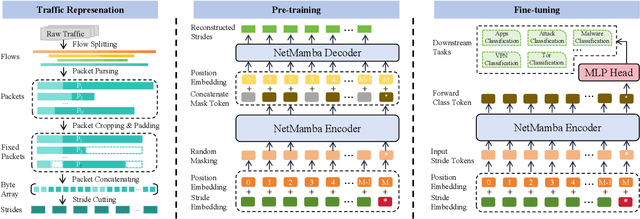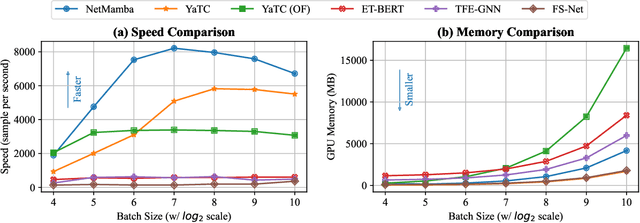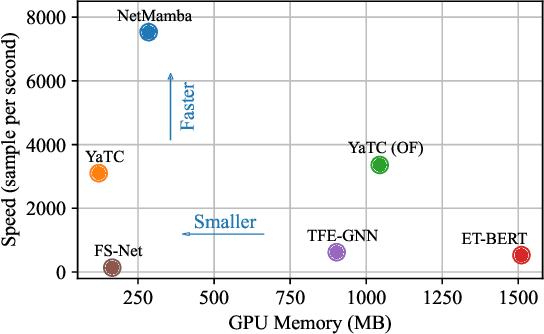Xiaohui Xie
Leveraging LLM Agents for Translating Network Configurations
Jan 15, 2025Abstract:Configuration translation is a critical and frequent task in network operations. When a network device is damaged or outdated, administrators need to replace it to maintain service continuity. The replacement devices may originate from different vendors, necessitating configuration translation to ensure seamless network operation. However, translating configurations manually is a labor-intensive and error-prone process. In this paper, we propose an intent-based framework for translating network configuration with Large Language Model (LLM) Agents. The core of our approach is an Intent-based Retrieval Augmented Generation (IRAG) module that systematically splits a configuration file into fragments, extracts intents, and generates accurate translations. We also design a two-stage verification method to validate the syntax and semantics correctness of the translated configurations. We implement and evaluate the proposed method on real-world network configurations. Experimental results show that our method achieves 97.74% syntax correctness, outperforming state-of-the-art methods in translation accuracy.
CoMA: Compositional Human Motion Generation with Multi-modal Agents
Dec 10, 2024



Abstract:3D human motion generation has seen substantial advancement in recent years. While state-of-the-art approaches have improved performance significantly, they still struggle with complex and detailed motions unseen in training data, largely due to the scarcity of motion datasets and the prohibitive cost of generating new training examples. To address these challenges, we introduce CoMA, an agent-based solution for complex human motion generation, editing, and comprehension. CoMA leverages multiple collaborative agents powered by large language and vision models, alongside a mask transformer-based motion generator featuring body part-specific encoders and codebooks for fine-grained control. Our framework enables generation of both short and long motion sequences with detailed instructions, text-guided motion editing, and self-correction for improved quality. Evaluations on the HumanML3D dataset demonstrate competitive performance against state-of-the-art methods. Additionally, we create a set of context-rich, compositional, and long text prompts, where user studies show our method significantly outperforms existing approaches.
Contrastive Learning for Implicit Social Factors in Social Media Popularity Prediction
Oct 12, 2024Abstract:On social media sharing platforms, some posts are inherently destined for popularity. Therefore, understanding the reasons behind this phenomenon and predicting popularity before post publication holds significant practical value. The previous work predominantly focuses on enhancing post content extraction for better prediction results. However, certain factors introduced by social platforms also impact post popularity, which has not been extensively studied. For instance, users are more likely to engage with posts from individuals they follow, potentially influencing the popularity of these posts. We term these factors, unrelated to the explicit attractiveness of content, as implicit social factors. Through the analysis of users' post browsing behavior (also validated in public datasets), we propose three implicit social factors related to popularity, including content relevance, user influence similarity, and user identity. To model the proposed social factors, we introduce three supervised contrastive learning tasks. For different task objectives and data types, we assign them to different encoders and control their gradient flows to achieve joint optimization. We also design corresponding sampling and augmentation algorithms to improve the effectiveness of contrastive learning. Extensive experiments on the Social Media Popularity Dataset validate the superiority of our proposed method and also confirm the important role of implicit social factors in popularity prediction. We open source the code at https://github.com/Daisy-zzz/PPCL.git.
NetMamba: Efficient Network Traffic Classification via Pre-training Unidirectional Mamba
May 19, 2024



Abstract:Network traffic classification is a crucial research area aiming to enhance service quality, streamline network management, and bolster cybersecurity. To address the growing complexity of transmission encryption techniques, various machine learning and deep learning methods have been proposed. However, existing approaches encounter two main challenges. Firstly, they struggle with model inefficiency due to the quadratic complexity of the widely used Transformer architecture. Secondly, they suffer from unreliable traffic representation because of discarding important byte information while retaining unwanted biases. To address these challenges, we propose NetMamba, an efficient linear-time state space model equipped with a comprehensive traffic representation scheme. We replace the Transformer with our specially selected and improved Mamba architecture for the networking field to address efficiency issues. In addition, we design a scheme for traffic representation, which is used to extract valid information from massive traffic while removing biased information. Evaluation experiments on six public datasets encompassing three main classification tasks showcase NetMamba's superior classification performance compared to state-of-the-art baselines. It achieves up to 4.83\% higher accuracy and 4.64\% higher f1 score on encrypted traffic classification tasks. Additionally, NetMamba demonstrates excellent efficiency, improving inference speed by 2.24 times while maintaining comparably low memory usage. Furthermore, NetMamba exhibits superior few-shot learning abilities, achieving better classification performance with fewer labeled data. To the best of our knowledge, NetMamba is the first model to tailor the Mamba architecture for networking.
LidaRF: Delving into Lidar for Neural Radiance Field on Street Scenes
May 04, 2024Abstract:Photorealistic simulation plays a crucial role in applications such as autonomous driving, where advances in neural radiance fields (NeRFs) may allow better scalability through the automatic creation of digital 3D assets. However, reconstruction quality suffers on street scenes due to largely collinear camera motions and sparser samplings at higher speeds. On the other hand, the application often demands rendering from camera views that deviate from the inputs to accurately simulate behaviors like lane changes. In this paper, we propose several insights that allow a better utilization of Lidar data to improve NeRF quality on street scenes. First, our framework learns a geometric scene representation from Lidar, which is fused with the implicit grid-based representation for radiance decoding, thereby supplying stronger geometric information offered by explicit point cloud. Second, we put forth a robust occlusion-aware depth supervision scheme, which allows utilizing densified Lidar points by accumulation. Third, we generate augmented training views from Lidar points for further improvement. Our insights translate to largely improved novel view synthesis under real driving scenes.
DiL-NeRF: Delving into Lidar for Neural Radiance Field on Street Scenes
May 01, 2024Abstract:Photorealistic simulation plays a crucial role in applications such as autonomous driving, where advances in neural radiance fields (NeRFs) may allow better scalability through the automatic creation of digital 3D assets. However, reconstruction quality suffers on street scenes due to largely collinear camera motions and sparser samplings at higher speeds. On the other hand, the application often demands rendering from camera views that deviate from the inputs to accurately simulate behaviors like lane changes. In this paper, we propose several insights that allow a better utilization of Lidar data to improve NeRF quality on street scenes. First, our framework learns a geometric scene representation from Lidar, which is fused with the implicit grid-based representation for radiance decoding, thereby supplying stronger geometric information offered by explicit point cloud. Second, we put forth a robust occlusion-aware depth supervision scheme, which allows utilizing densified Lidar points by accumulation. Third, we generate augmented training views from Lidar points for further improvement. Our insights translate to largely improved novel view synthesis under real driving scenes.
BiLO: Bilevel Local Operator Learning for PDE inverse problems
Apr 27, 2024Abstract:We propose a new neural network based method for solving inverse problems for partial differential equations (PDEs) by formulating the PDE inverse problem as a bilevel optimization problem. At the upper level, we minimize the data loss with respect to the PDE parameters. At the lower level, we train a neural network to locally approximate the PDE solution operator in the neighborhood of a given set of PDE parameters, which enables an accurate approximation of the descent direction for the upper level optimization problem. The lower level loss function includes the L2 norms of both the residual and its derivative with respect to the PDE parameters. We apply gradient descent simultaneously on both the upper and lower level optimization problems, leading to an effective and fast algorithm. The method, which we refer to as BiLO (Bilevel Local Operator learning), is also able to efficiently infer unknown functions in the PDEs through the introduction of an auxiliary variable. We demonstrate that our method enforces strong PDE constraints, is robust to sparse and noisy data, and eliminates the need to balance the residual and the data loss, which is inherent to soft PDE constraints.
Large Language Models for Networking: Workflow, Advances and Challenges
Apr 19, 2024Abstract:The networking field is characterized by its high complexity and rapid iteration, requiring extensive expertise to accomplish network tasks, ranging from network design, diagnosis, configuration and security. The inherent complexity of these tasks, coupled with the ever-changing landscape of networking technologies and protocols, poses significant hurdles for traditional machine learning-based methods. These methods often struggle to generalize and automate complex tasks in networking, as they require extensive labeled data, domain-specific feature engineering, and frequent retraining to adapt to new scenarios. However, the recent emergence of large language models (LLMs) has sparked a new wave of possibilities in addressing these challenges. LLMs have demonstrated remarkable capabilities in natural language understanding, generation, and reasoning. These models, trained on extensive data, can benefit the networking domain. Some efforts have already explored the application of LLMs in the networking domain and revealed promising results. By reviewing recent advances, we present an abstract workflow to describe the fundamental process involved in applying LLM for Networking. We introduce the highlights of existing works by category and explain in detail how they operate at different stages of the workflow. Furthermore, we delve into the challenges encountered, discuss potential solutions, and outline future research prospects. We hope that this survey will provide insight for researchers and practitioners, promoting the development of this interdisciplinary research field.
Improving Legal Case Retrieval with Brain Signals
Mar 20, 2024



Abstract:The tasks of legal case retrieval have received growing attention from the IR community in the last decade. Relevance feedback techniques with implicit user feedback (e.g., clicks) have been demonstrated to be effective in traditional search tasks (e.g., Web search). In legal case retrieval, however, collecting relevance feedback faces a couple of challenges that are difficult to resolve under existing feedback paradigms. First, legal case retrieval is a complex task as users often need to understand the relationship between legal cases in detail to correctly judge their relevance. Traditional feedback signal such as clicks is too coarse to use as they do not reflect any fine-grained relevance information. Second, legal case documents are usually long, users often need even tens of minutes to read and understand them. Simple behavior signal such as clicks and eye-tracking fixations can hardly be useful when users almost click and examine every part of the document. In this paper, we explore the possibility of solving the feedback problem in legal case retrieval with brain signal. Recent advances in brain signal processing have shown that human emotional can be collected in fine grains through Brain-Machine Interfaces (BMI) without interrupting the users in their tasks. Therefore, we propose a framework for legal case retrieval that uses EEG signal to optimize retrieval results. We collected and create a legal case retrieval dataset with users EEG signal and propose several methods to extract effective EEG features for relevance feedback. Our proposed features achieve a 71% accuracy for feedback prediction with an SVM-RFE model, and our proposed ranking method that takes into account the diverse needs of users can significantly improve user satisfaction for legal case retrieval. Experiment results show that re-ranked result list make user more satisfied.
Integrating Efficient Optimal Transport and Functional Maps For Unsupervised Shape Correspondence Learning
Mar 04, 2024



Abstract:In the realm of computer vision and graphics, accurately establishing correspondences between geometric 3D shapes is pivotal for applications like object tracking, registration, texture transfer, and statistical shape analysis. Moving beyond traditional hand-crafted and data-driven feature learning methods, we incorporate spectral methods with deep learning, focusing on functional maps (FMs) and optimal transport (OT). Traditional OT-based approaches, often reliant on entropy regularization OT in learning-based framework, face computational challenges due to their quadratic cost. Our key contribution is to employ the sliced Wasserstein distance (SWD) for OT, which is a valid fast optimal transport metric in an unsupervised shape matching framework. This unsupervised framework integrates functional map regularizers with a novel OT-based loss derived from SWD, enhancing feature alignment between shapes treated as discrete probability measures. We also introduce an adaptive refinement process utilizing entropy regularized OT, further refining feature alignments for accurate point-to-point correspondences. Our method demonstrates superior performance in non-rigid shape matching, including near-isometric and non-isometric scenarios, and excels in downstream tasks like segmentation transfer. The empirical results on diverse datasets highlight our framework's effectiveness and generalization capabilities, setting new standards in non-rigid shape matching with efficient OT metrics and an adaptive refinement module.
 Add to Chrome
Add to Chrome Add to Firefox
Add to Firefox Add to Edge
Add to Edge